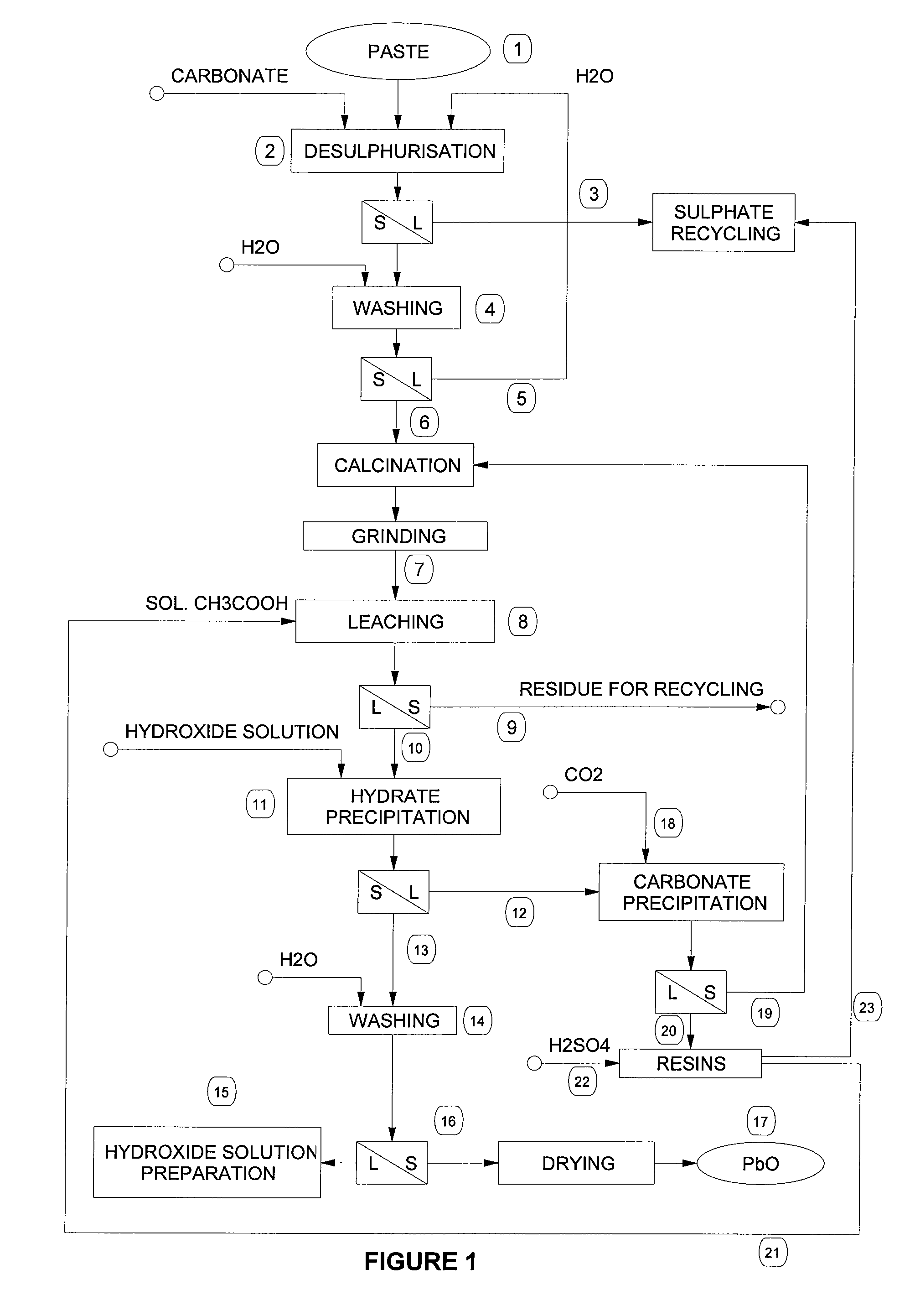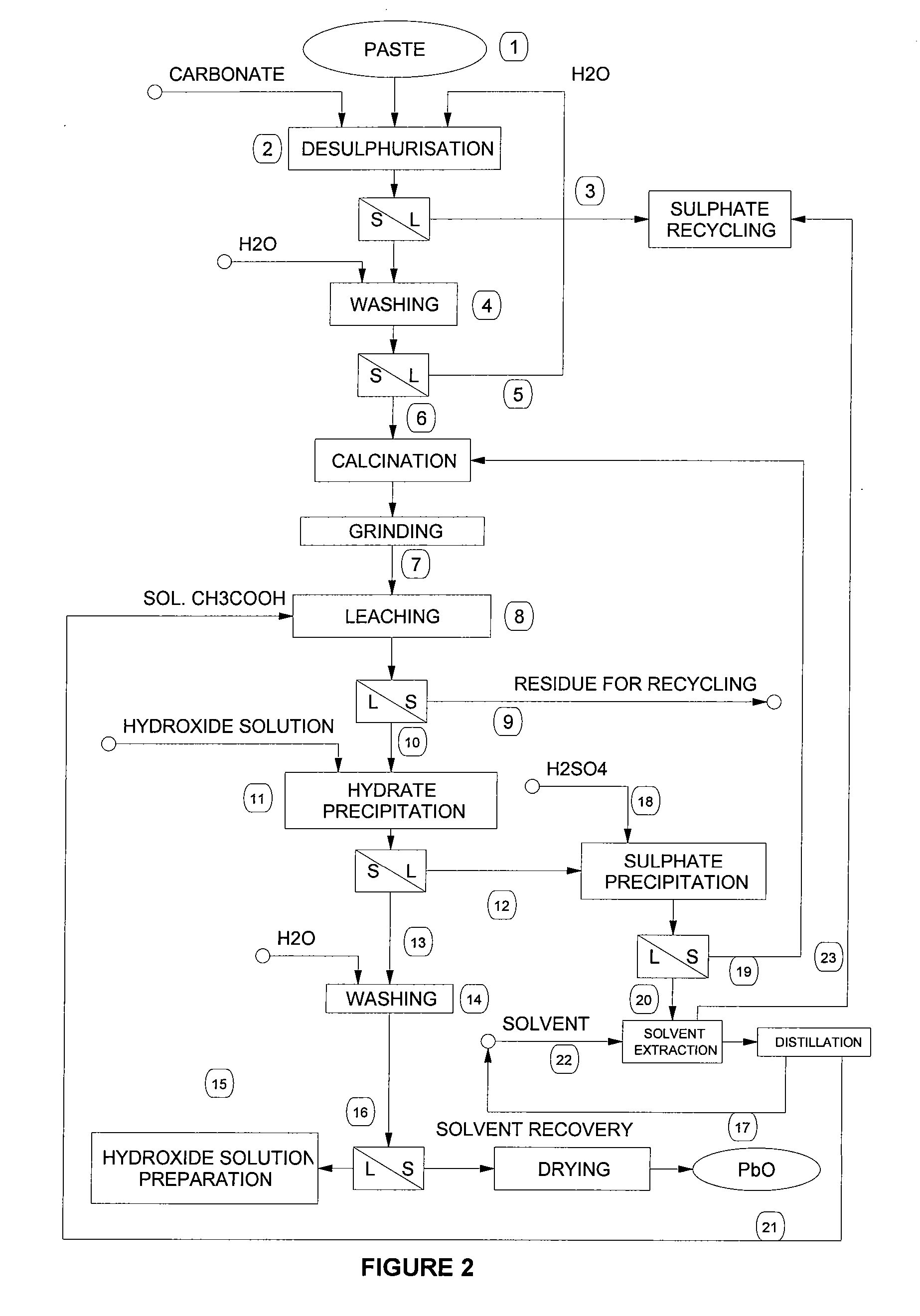Process for the production of lead hydrate or monoxide of high purity, from materials and/or residues containing lead in the form of sulphates, monoxides and/or other compounds
- Summary
- Abstract
- Description
- Claims
- Application Information
AI Technical Summary
Benefits of technology
Problems solved by technology
Method used
Image
Examples
example 1
[0048] Desulphurisation operation by means of carbonation of the paste was carried out in an aqueous suspension at 80° C. with sodium carbonate. After 1 hour the conversion rate is more than 90%. The carbonated paste is washed to remove completely sodium sulphate and is then calcinated at 650° C. for about 1 hour.
[0049] 1000 g of this calcinated product are leached with 9 litres of an aqueous solution of acetic acid (60-70 g / l) at 50° C. for about 1 hour. The residue, which mainly consists of lead sulphate and contains the majority of the impurities such as silica, silicates and aluminosilicates, calcium sulphate, ferrous hydroxides, complex lead / antimony salts, barium sulphate, stannous oxides, etc., is then separated by filtration. The leaching yield under such conditions is about 90% as to lead.
[0050] The clear filtered solution is then alkalinised by slowly adding a solution of about 9N sodium hydrate, stirring continuously, and keeping temperature below 50° C. Once all the le...
example 2
[0052] 1000 g limed material, obtained as explained in example 1 above, was leached with 4.5 l acetic acid solution (c. 130 g / l) at 50° C. for 1 hour. Following the same steps as above, 675 g of lead monoxide with a titre of 99.0% was obtained, which after calcination at 650° C. reached a value more than 99.9%.
example 3
[0053] Lead hydroxide, obtained as in example 1 above, was re-dissolved with an excess of sodium hydrate and then re-precipitated to return the pH of the solution to about 13 using acid. The resulting hydrate was washed and dried as in example 1. The titre of the resulting monoxide exceeds 99.99%.
PUM
 Login to View More
Login to View More Abstract
Description
Claims
Application Information
 Login to View More
Login to View More - R&D
- Intellectual Property
- Life Sciences
- Materials
- Tech Scout
- Unparalleled Data Quality
- Higher Quality Content
- 60% Fewer Hallucinations
Browse by: Latest US Patents, China's latest patents, Technical Efficacy Thesaurus, Application Domain, Technology Topic, Popular Technical Reports.
© 2025 PatSnap. All rights reserved.Legal|Privacy policy|Modern Slavery Act Transparency Statement|Sitemap|About US| Contact US: help@patsnap.com


